
Now St. Paul A. M. E. Zion Church. This congregation had money in the 1960s, it would seem; a new sanctuary in 1960s modernist Gothic was grafted on the older Sunday-school and office wing, which is in a stony Jacobean style.



Designed by Ralph Adams Cram, this church has a more austere sort of dignity than the architect’s other two works in Pittsburgh, East Liberty Presbyterian and Holy Rosary Catholic. It apparently took some delicate maneuvering to get an Episcopal congregation with low-church sympathies (but lots of money) to accept a Gothic masterpiece.

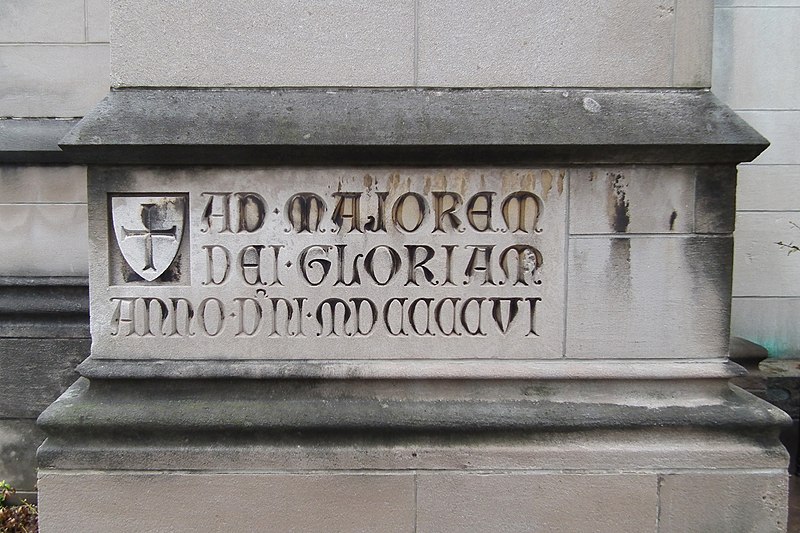
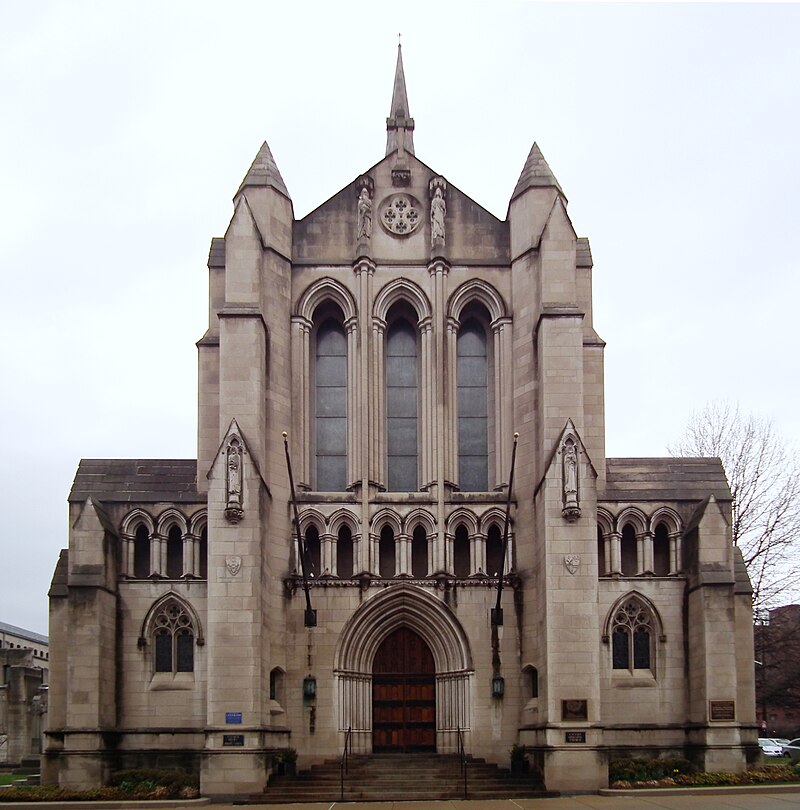

St. Mark.

St. Luke.



St. Andrew.

Unusually decorative downspouts.



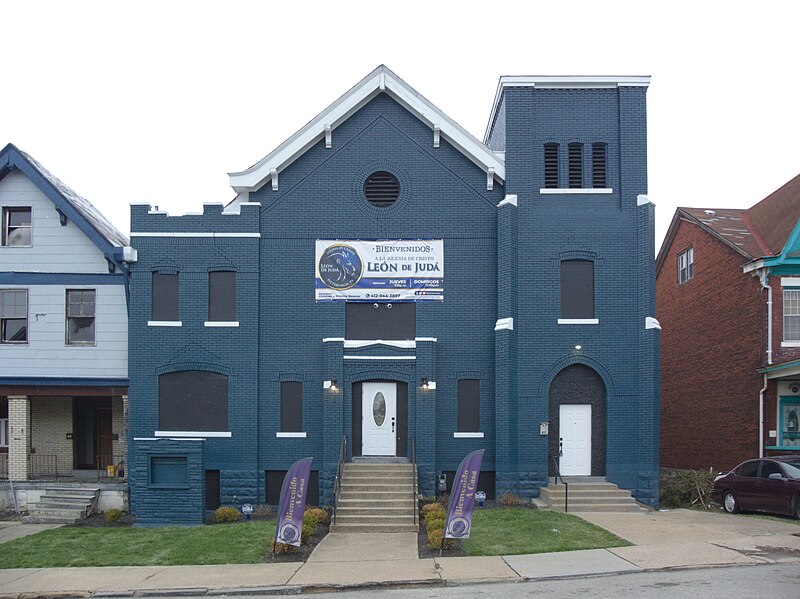
Now Iglesia de Cristo León de Judá, the Knoxville Baptist Church was built in 1909; it is a typical small vernacular-Gothic church with some Arts and Crafts details. The attractive indigo paint applied by the current congregation makes it stand out from others of its type.

Fundamentalist Christians in the United States have always had a deep suspicion of stained glass as creeping idolatry, but the Spanish-speaking Evangelical congregations are the most vengefully thorough about it. As soon as they take over an old church building, the stained glass is removed. Usually it is replaced with clear glass, but this congregation has blocked all natural light from entering the building. Photographs of services on line show that the interior is set up like a theater, and natural light would only interfere with the projections and spotlights.




Update: This church was demolished in August of 2023.
Now known as Shady Avenue Christian Assembly, after having spent many years as Shady Avenue Presbyterian Church (without the “Cumberland”).
Just down the street from the huge and spectacular Calvary Episcopal and Sacred Heart Catholic churches, each the size of many a cathedral, this 1889 church is likely to pass unnoticed. Once you do notice it, though, you will not stop noticing it. It is a bravura performance in a sort of Queen Anne Romanesque style by a Victorian architect who was about 22 years old at the time, and who was not afraid to pull out all the stops and stomp on the pedals for all he was worth. An entire issue of the East Ender, the East End Historical Society’s newsletter, was devoted to the architect, T. C. McKee (PDF), and we take all our information from Justin P. Greenawalt with profound gratitude for his research.
Thomas Cox McKee (usually known as T. C. McKee) was apprenticed to architect James W. Drum. But in 1886, when young McKee was still only 20, his master was run over by a freight train. Instead of looking for another apprentice position, McKee went out on his own and seems to have been successful right away. He later built a comfortable practice designing homes for the wealthy and small to medium-sized commercial buildings, along with at least one prominent school (the Belmar School in Homewood, still standing). Then, in 1910, he threw it all away and went to Cleveland, where he took odd jobs until he settled down as a designer of soda fountains. No one seems to know what happened, although Mr. Greenawalt’s article hints that it might have had something to do with McKee’s constitutional extravagance.
That extravagance comes through in every detail of this building. In the age of modernism, this sort of thing was dismissed as a bunch of Victorian noise, but the masses are balanced to form interesting compositions from every angle.

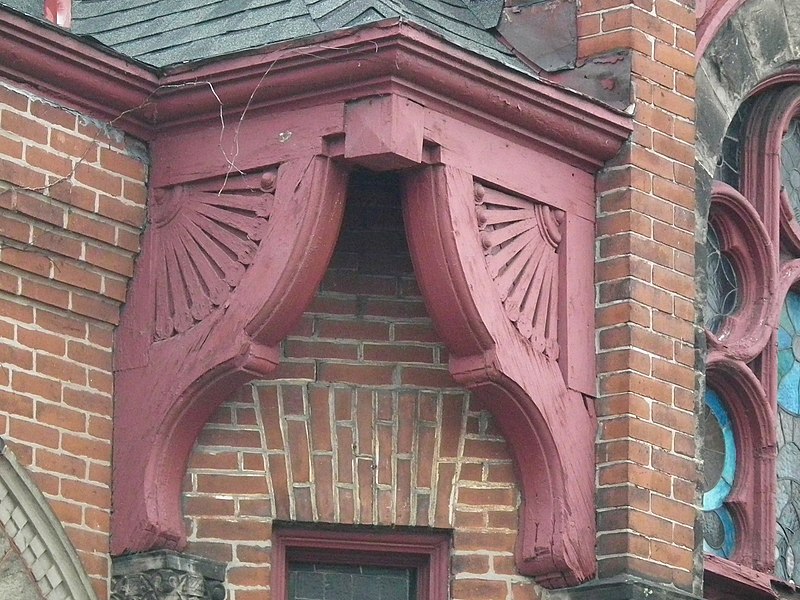
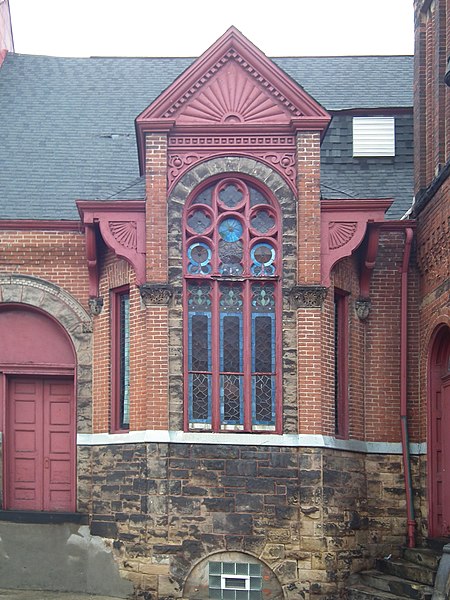
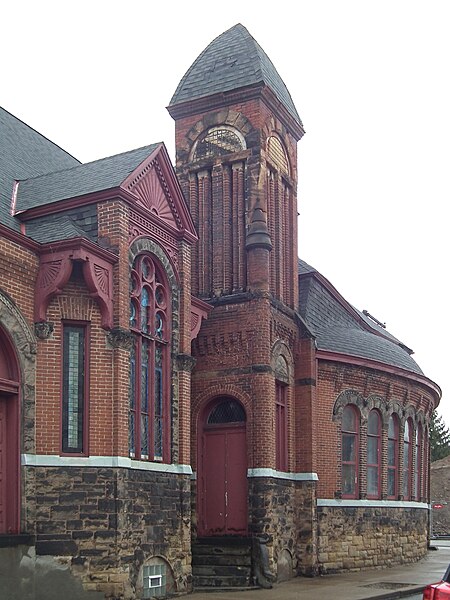



The much more conventional 1911 addition (although even it is a little bit fantastical) was designed by Rodgers & Minnis. Below we see it across the pile of dirt that used to be Shady Hill Center until the property became too valuable to host a suburban-style strip mall.

Map.

When Dormont was founded in 1909, its founders wanted to call it “Mount Lebanon,” the historical name of that part of the South Hills. There was some friction, however, with residents to the south of the new borough, who of course later adopted that name themselves. The result was that borough founders picked the nonsensical inside-out-French name “Dormont,” which as far as old Pa Pitt knows is unique in the world. Several institutions in Dormont, however, kept the name “Mount Lebanon,” among them two churches. This one closed in 2013, the same year Dormont’s Presbyterians and Methodists threw in the towel. The building, however, has been kept in good shape. Built in 1930, it is a fine example of the streamlined Gothic influenced by Art Deco that was popular in the 1920s and 1930s.
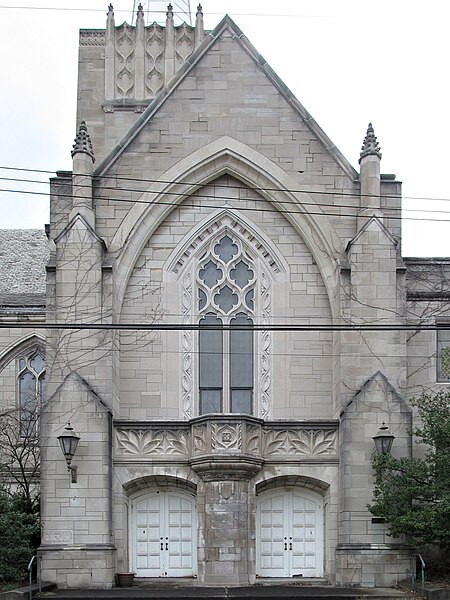

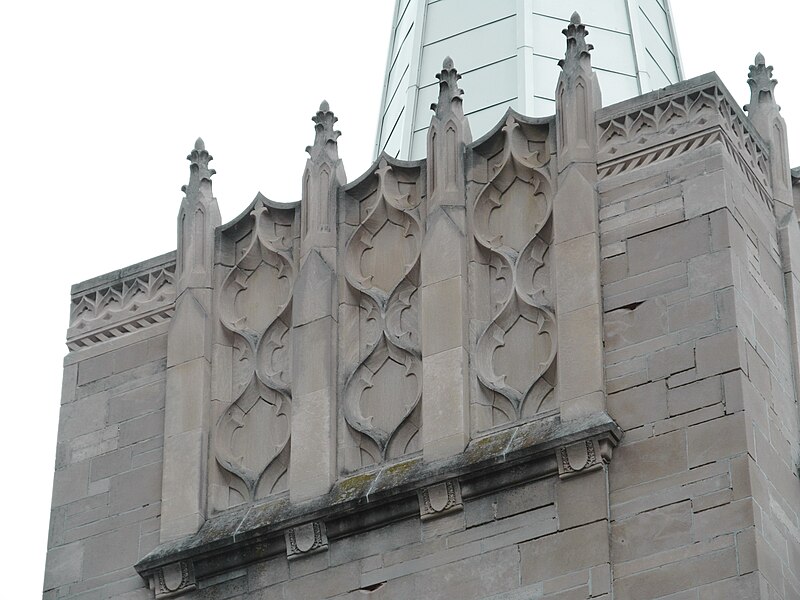


Vine decorations under the entrance arches.




The sign along West Liberty Avenue matched the stone and style of the building.
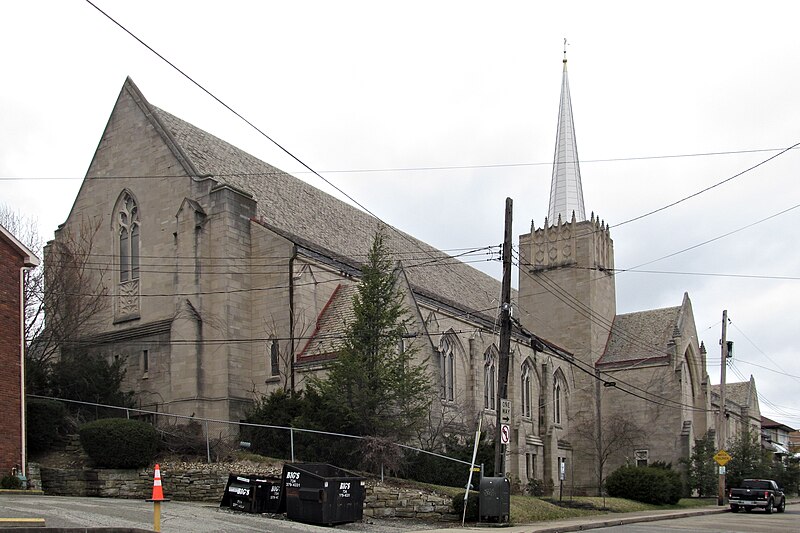

This long-lens view from Mount Washington shows us how architect William P. Hutchins crammed as much church and diocesan office space as possible into a tiny downtown lot. The church was built in 1936 in a part of town that was not the most fashionable at the time, and the location and the Depression probably account for the general modesty of the structure. But within its modest limits, it certainly makes the most of its lot.
Hutchins is not one of our most celebrated architects, but he did give the Catholics in Pittsburgh some distinguished buildings. An article about St. James Church in Wilkinsburg gives us some more information about him.
Old Pa Pitt was about to link to some of his earlier pictures of St. Mary of Mercy and discovered that he never published them. Here are a few pictures from ground level.





The imposing Tudor or Jacobean Gothic front of this church is its most impressive feature, with twin towers that make the church seem bigger than it is. The large stained-glass window in the center seems a little undersized for the building, leaving an awkward blank space above it; but that is a minor quibble, and this is a fine building kept in good shape by its congregation.


With the Lower Hill demolished and replaced with a modernist wasteland, this church became the gateway to the Hill District. There may be no more effective religious statue in all of Pittsburgh than the statue of St. Benedict the Moor (by Frederick Charles Shrady) on top of the tower, his arms spread wide to welcome us to his neighborhood. The Gothic church, built in 1894, was designed by Moeser & Bippus, whose offices were downtown on Liberty Avenue.1 Henry Moeser or Moser (he was German, and probably spelled it Möser, but found diacritics hard to come by in the American press) was the Moser of Barr & Moser, Pittsburgh’s busiest architects in the middle 1800s. George Bippus would become the house architect for the H. J. Heinz operations.2 The church originally belonged to Holy Trinity, a German Catholic parish.


And now let us say something for a moment about the ethnic diversity of the Hill a hundred years ago. If you stayed within six blocks of this German church, you could have visited two African Methodist Episcopal churches and one “colored” Presbyterian church, an Irish Catholic church, a Greek Catholic (that is, Byzantine Catholic) church, a Black Baptist church, and every kind of synagogue:
Congregation Machsike Hadas
Beth Jacob Congregation
B’nai Israel Congregation
Gates of Wisdom Synagogue
Congregation Tent of Jacob
Tiphereth Israel Congregation
Paolo Zaoec Synagogue (Austro-Hungarian)
Congregation Shaare Tefilla
Congregation Kanascis Israel
And doubtless some others; we have just been glancing at the 1923 maps at the Pittsburgh Historic Maps site and have not made any scientific survey. This was not the whole Hill, of course; we have kept within a short walk of today’s St. Benedict the Moor. People of all sorts lived side by side in a crowded but lively neighborhood. Over at Pittsburgh Cemeteries, Father Pitt has noticed the ethnic diversity of the Hill reflected in the Minersville Cemetery on the Upper Hill, a German Lutheran cemetery that nevertheless found space for people whose tombstones are written in Slovak, Greek, and Arabic.
That the Hill became an almost exclusively Black neighborhood was the result of deliberate public policy. A neighborhood where races mixed was defined as a slum, and slums had to be cleared. Of the streets we were just walking in our imagination, half were simply demolished. The rest was marked out as a Black neighborhood; other residents had every incentive to move to areas from which Blacks were excluded by invisible red lines, though many businesses continued to be owned by former residents who had moved away, until the 1968 riots discouraged them.
The human spirit triumphs over inhumanity, however, and today’s Hill is a neighborly neighborhood. It is not prosperous; it has lost far too many buildings and gained too many vacant lots. But it is a place where people practice the neighborly virtues, and we hope that from that precious resource will come a revival of the lesser assets as well.

A block away from the magnificent Calvary Methodist Church was another Methodist church, almost as magnificent—but Methodist Protestant, whereas Calvary was Methodist Episcopal. Calvary is exuberantly Gothic; this is a heavier Romanesque style. For some reason it has never made anyone’s landmarks list, but in Father Pitt’s opinion it deserves recognition and preservation as a fine example of the Richardsonian Romanesque style.
The building later became home to the Carter Chapel C.M.E. Church, a historic Black congregation that had previously been on the Hill in the former Congregation Kaiser Torah synagogue.
Now it is abandoned, and under sentence of condemnation since it started shedding bits of stone. According to a passing neighbor who struck up a conversation with the man with the camera, it was bought for $300,000 some time ago, but the owner seems not to have been able to do anything with it. It is just on the edge of Allegheny West, a very desirable neighborhood, but neighborhood boundaries are everything in real estate, and this church is technically in Manchester.
Since the building may vanish soon, old Pa Pitt spent some time documenting the exterior. To avoid weighing down the front page for the next week and a half, the rest of the pictures are below the metaphorical fold.
(more…)